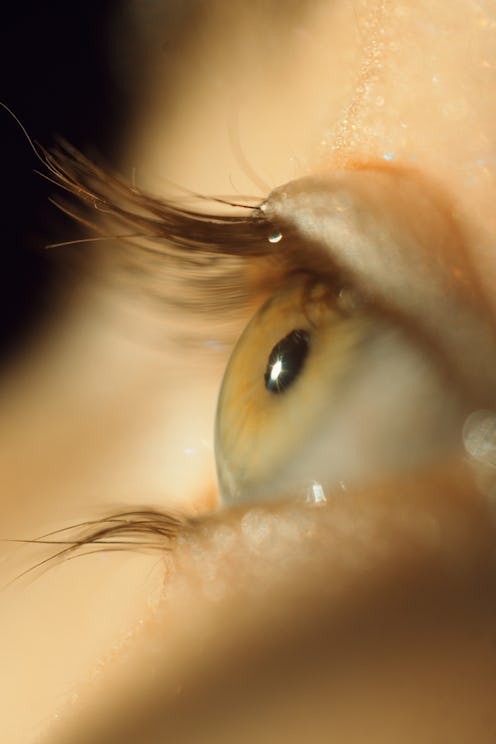Life
These GIFs Show What It's Like To Be Colorblind

Color vision deficiency — more commonly known as “color blindness” — is quite common, but it can be hard to imagine if you’ve never experienced it. Thankfully, Clinic Compare, a UK medical consulting service, has created a series of GIFs that show what colorblindness looks like for different people. It turns out that there’s a lot more variation in the way people perceive color than you might think.
According to the National Eye Institute, 8 percent of men and 0.5 percent of women descended from Northern Europeans have red-green color blindness. The gender imbalance here is due to the fact that the gene for color blindness is X-linked, meaning that it’s found on the X chromosome. Because women have two X chromosomes, they usually have a normal gene for color vision on one chromosome that can counterbalance an abnormal one on the other. Men only have one X-chromosome, so if they inherit a gene for colorblindness, that’s the gene they express. Most color vision deficiency is inherited, but it can be caused by other factors, including age, medication, exposure to certain chemicals, and diseases including Alzheimer’s disease, Parkinson’s disease, diabetes, and glaucoma.
Color blindness exists across a spectrum. Only in very rare cases do people experience a total lack of color vision; what’s more common is an inability to distinguish between certain colors. Red-green color blindness is the most common type of the disorder, though blue-yellow also colorblindness exists. There are a number of varieties of color blindness within these broad categories that range significantly in severity.
Depending on how severe it is, color blindness can impact people’s lives in a variety of ways, from impeding their ability to read traffic lights and maps to making it more difficult for them to figure out whether their clothing matches. There is no cure for inherited color blindness, but, fortunately, most people are able to adapt to the disorder.
Here are what eight varieties of color blindness look like, in handy GIF form:
Protanomaly
Protanomaly is a common form of inherited red-green color blindness that affects 1 percent of men. As you can see in the GIF, its effects are fairly mild, with red, orange, and yellow taking on a green tinge, and all colors appearing duller than usual.
Protanopia
Protanopia also affects 1 percent of males, and is caused by an inability to perceive the part of the light spectrum associated with red. That means that red looks black, while some green, orange, and yellow hues look yellow.
Deuteranomaly
Deuteranomaly — characterized by difficulty perceiving shades of green — is the most common form of color blindness, affecting 5 percent of men. People with deuteranomaly tend to confuse blue and purple, and perceive increased red in yellow and green shades. As you can see, it’s also fairly mild.
Deuteranopia
A person with deuteranopia is incapable of perceiving light on the green end of the spectrum and will commonly see beige in place of green, brown and yellow in place of red, and gray in place of pink. One percent of men have deuteranopia.
Tritanomaly
Tritanomaly falls within the rare category of blue-yellow color blindness. For people with this unusual condition, blue takes on a green-tinge, and yellow is hard to distinguish from red and pink. (As you can see, it’s fairly mild.)
Tritanopia
Tritanopia is a very rare condition in which people perceive blue as green and yellow as purple or gray.
Blue Cone Monochromancy
People with normal color vision have cone cell photopigments in their eyes in three colors (red, green, and blue). The brain needs to be able to contrast these pigments in order to make sense of what is being seen. A person with cone monochromancy only has cone cell photopigments in one color, so, without the ability to contrast colors, his or her brain has a hard time distinguishing the colors on display. According to the National Eye Institute, someone with blue cone monochromacy may also suffer from “reduced visual acuity, near-sightedness, and uncontrollable eye movements” (aka “nystagmus.”)
Monochromancy/ Achromatopsia
Monochromancy is a rare condition in which a person lacks the ability to see any color whatsoever. He or she will see the world entirely in black, white, and gray. People with monochromancy tend to be extremely light sensitive and prone to nystagmus.
Images: Masha Raymers/Moment/Getty Images; Courtesy of Clinic Compare (8)